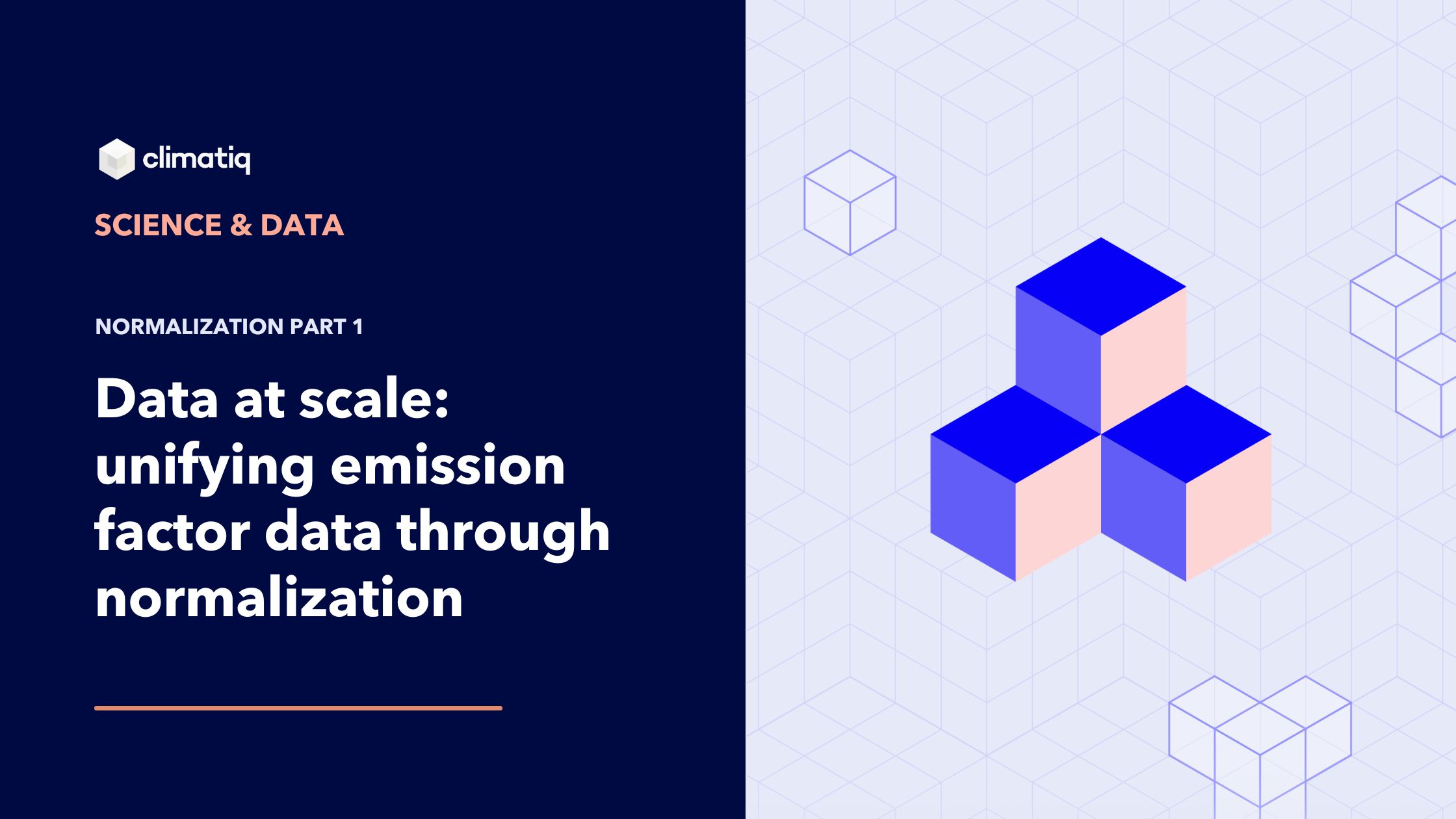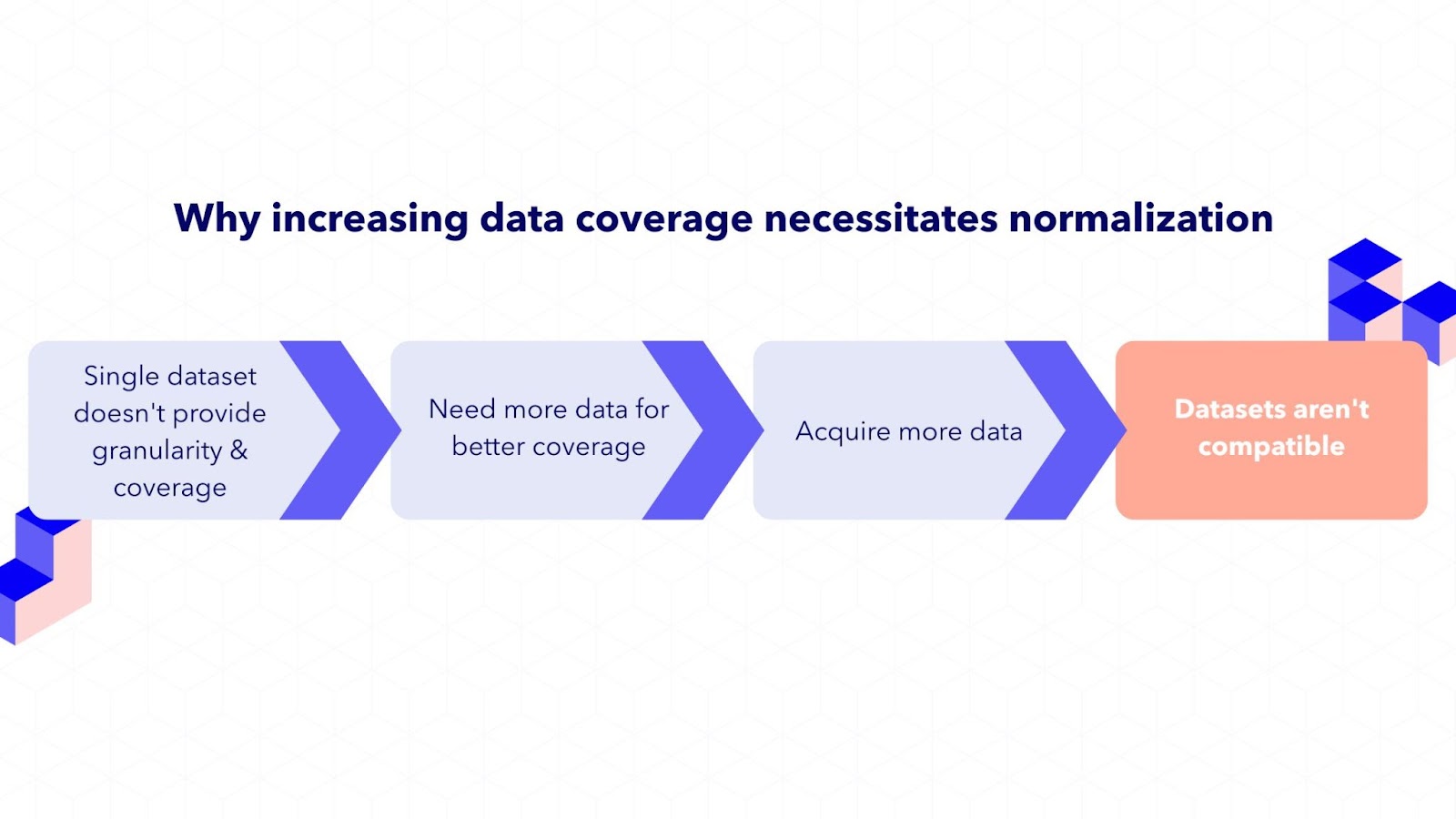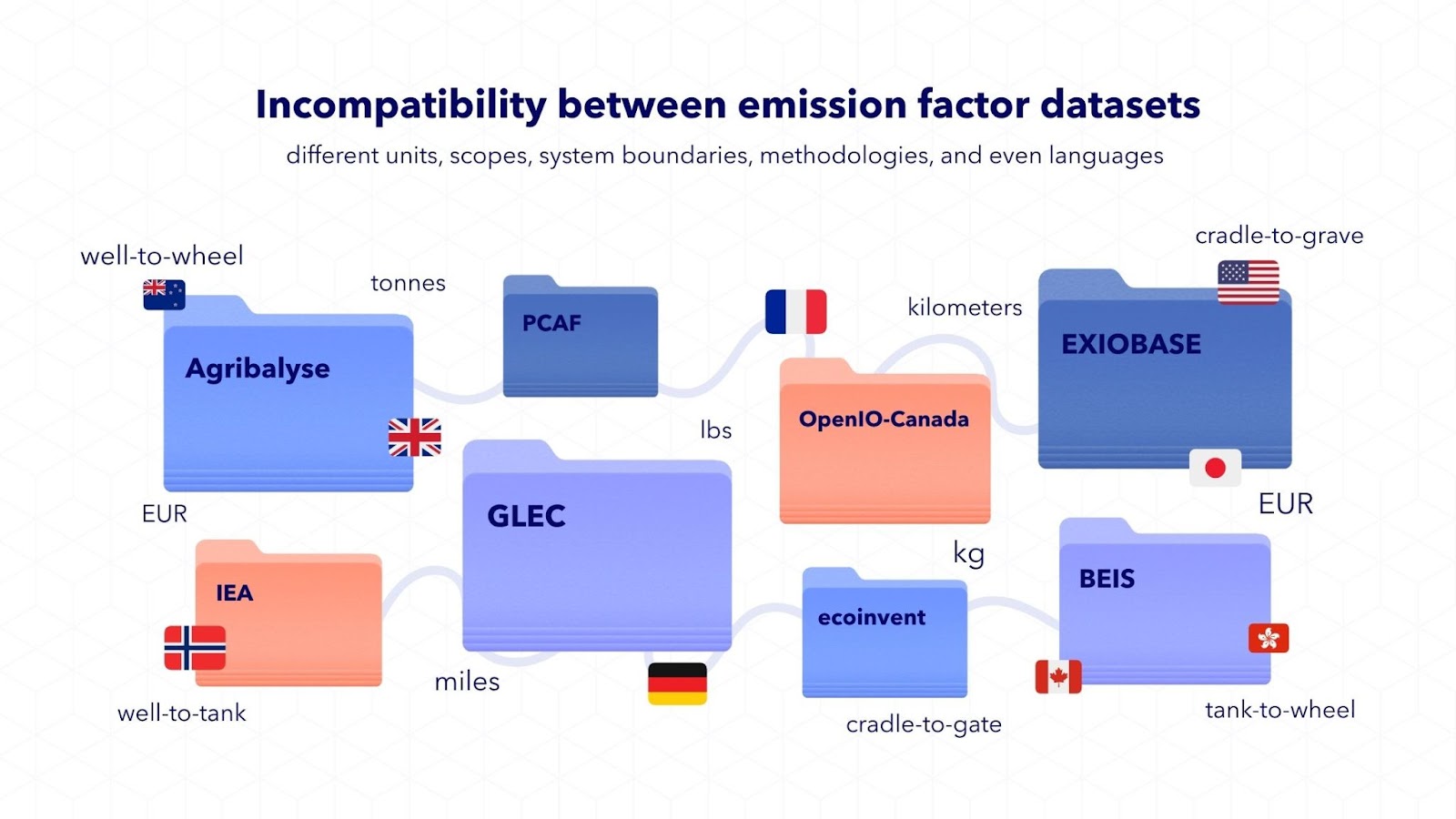


This is the first of two blog posts on the topic of emission factor normalization. In this blog, we will define what normalization means and why it’s necessary for calculating emissions at a global scale. Read our second article to learn more about what the normalization process looks like at Climatiq specifically.
On a small scale, carbon accounting is quite straightforward: you just need to find emission factors that match your business activity data and multiply the two together. But when you're measuring emissions at a larger scale, no single dataset will contain emission factors for every region or activity you need, increasing the complexity of your project exponentially.
Emission factor data originates from a wide range of providers, each with its own formatting, classification, system boundaries, units, and methodology, and there aren’t any global standards. This leaves organizations measuring emissions for different regions and activities with incompatible emission factors that undermine applicability and open the door to errors. This can potentially lead to inaccurate reports and expose them to audit risks and reputational damage.
To overcome these problems, emission factor data needs to be normalized. Data normalization is the process of standardizing data from diverse sources so it can be consistently compared, aggregated, and analyzed. It is a crucial step in carbon accounting at scale, as it enables comparison, analysis, and benchmarking of datasets that cover similar materials or processes. However, it’s not an easy process: normalization demands a high level of expertise and resources to complete successfully, as mistakes have a huge impact on accuracy.
Normalization is essential for emission factors to support automated tools, user-friendly experiences, reporting, global analysis, and overall carbon transparency. That’s why we have always prioritized building a normalized emission factor database that allows our customers to effectively measure emissions at scale from day one.

Accessing high-quality, consistent, and comprehensive emission factor data has historically been a significant challenge in carbon accounting. Emission factors are typically scattered across providers who all use different units, scopes, system boundaries, methodologies, and even languages. As no single data provider supports every region or sector, multiple datasets are a necessity to measure emissions on a global scale. When multiple datasets enter the mix, inconsistency is inevitable.
This mix of standards and conventions makes it difficult to compile and compare emission factors across sources, and even harder to integrate them into automated systems, increasing the potential for erroneous results. For example, within a single material, varying system boundaries (which define what is included in the scope of analysis, such as manufacturing, transport, use, and disposal) can lead to a 200-400% difference in the emission factor.
Without standardization, programmatic emissions calculations become impossible, as computer systems rely on consistent names, formats, and units to function. For data engineering teams, wrangling inconsistent data steals time from analysis, with each new data source requiring custom parsing, validation, transformation logic, and expert oversight. This greatly raises the cost of carbon accounting for a business, as well as creating huge delays before the data can be properly used.

The solution is to fully vet and normalize all data before it reaches your systems. At Climatiq, we do the heavy lifting behind the scenes: we collect, verify, and standardize emission factors from multiple trusted sources and transform them into a unified, consistent, high-quality dataset. This means you don’t have to waste time reconciling conflicting data or second-guessing accuracy. Instead, you can trust that every emission factor you use is up-to-date, comparable, and reliable so you can focus on what really matters: delivering accurate emissions calculations and insights to your customers, and building solutions that help them take meaningful climate action.
To find out more about our data and calculations, check out our Methodology Hub.